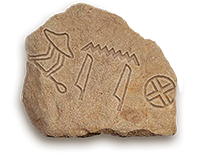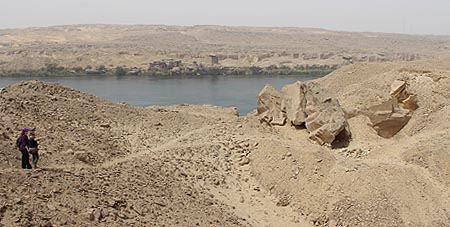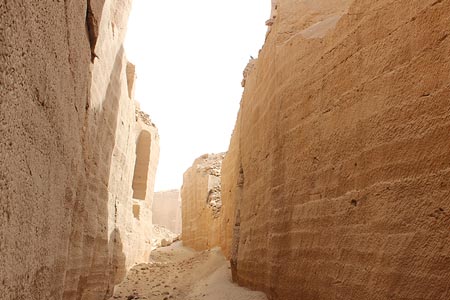
GET INVOLVED WITH FRIENDS OF SILSILA |
• HOME
• WHO WE ARE
• TEAM
• HISTORY
• GALLERY
• QUARRIES
• MONUMENTS
• ARTICLES
• SPONSORS
• VOLUNTEER
• RESULTS
• MEMBERSHIP
• LINKS
• CONTACT
|
KEY DISCOVERIES, SO FAR...
1. The rediscovery of the Temple of Kheny
2. 68 Prehistoric and early dynastic rock art sites
3. Over 5000 quarry marks/pictorial graffiti
4. Workers’ villages and storage facilities
5. Superimposed scenes within the Speos that predates Horemheb (a scene showing the transportation of two obelisks on a barge, similar to Hatshepsut’s scene in Deir el Bahari)
6. Superimposed scenes on the Nile stelae
7. Middle Kingdom expeditions recorded in inscriptions
8. Small stela on the east bank with unique combination of gods (Amun-Ra and Thoth)
9. Roman fort, road system and bridges
10. Quarry stables and administrative building belonging to the period of Tiberius
11. Series of tombs in the north of the east bank
12. Series of tombs just south of Nag el Hammam
13. Placing Gebel el Silsila along a major trade route, possibly connecting the Nile valley with Kharga Oasis
14. Major insights into the quarrying and transportation system during the New Kingdom and Roman period
15. Two unfinished obelisks
KEY RESULTS, SO FAR...
For the 2015 season the team aims to continue the archaeological work and focus on rock art documentation, ceramic and lithic analyses, geographic and geologic mapping, GIS and 3D documentation and clearing areas of sand and document its archaeology as part of making safe the site for tourism and protecting its archaeology from potential destruction, especially on the East Bank.
Future (larger and long-term) projects in association with the inspectorates of Aswan and Kom Ombo
* * *
BECOME PART OF OUR FRIENDS OF SILSILA FAMILY.
Your support is vital in enabling the FRIENDS of SILSILA to fulfill its mission to share this ancient site and its treasures with the world.
The Friends of Silsila relies on funding from a wide range of sources and there are many ways that you can donate to help ensure the continued archaeological work, guardianship, care and preservation of this ancient historic site for future generations.
Please consider supporting the Friends of Silsila today.
All donations are made in USD.
Please check the conversion table below.
CURRENCY CONVERSION $1 USD = 8.36 SEK (Swedish Krona) $1 USD = 0.64 GBP (British Pound) $1 USD = 7.64 EGYPTIAN POUNDS $1 USD = 0.91 EURO
CLICK IMAGES TO SEE LARGER VERSIONS...




